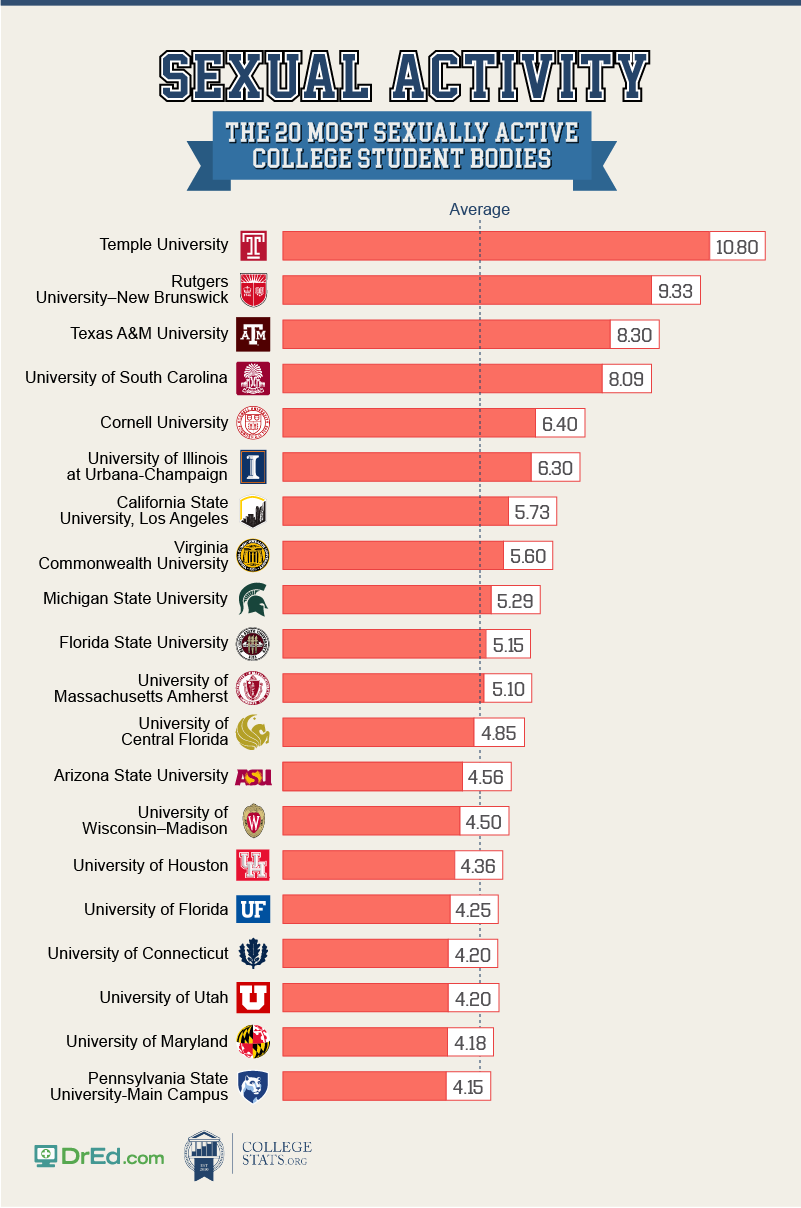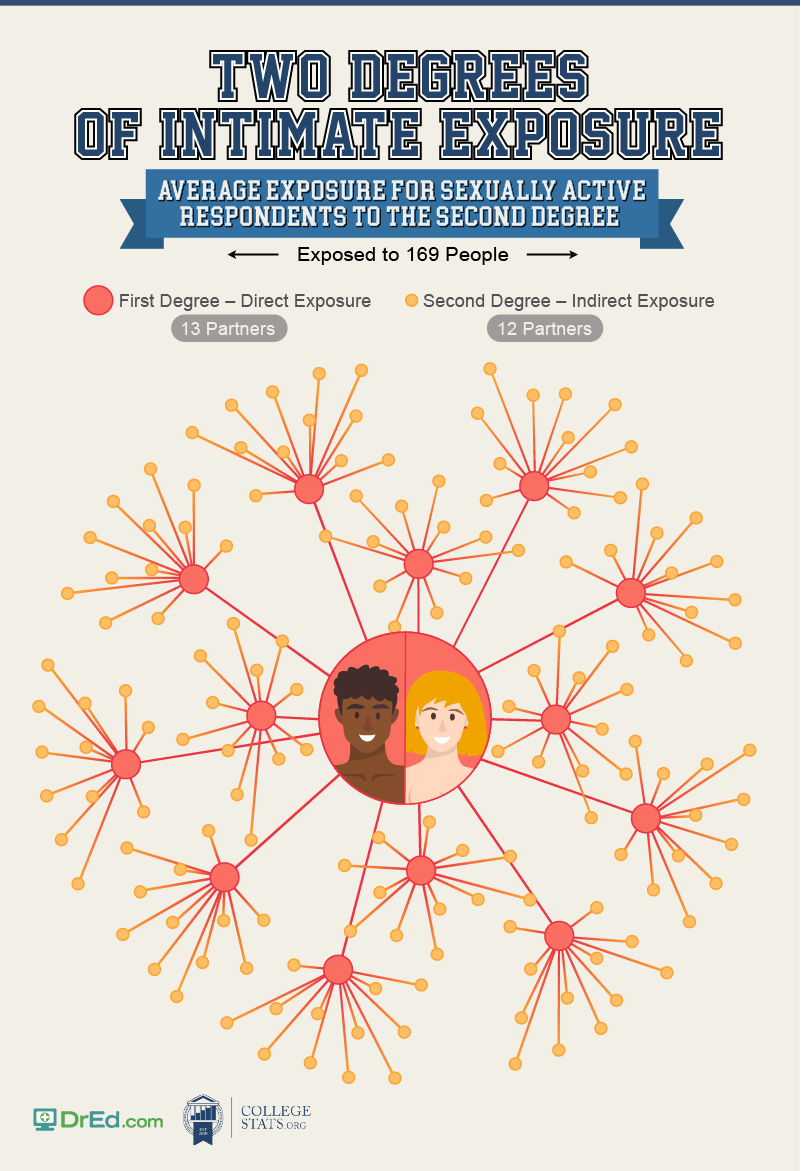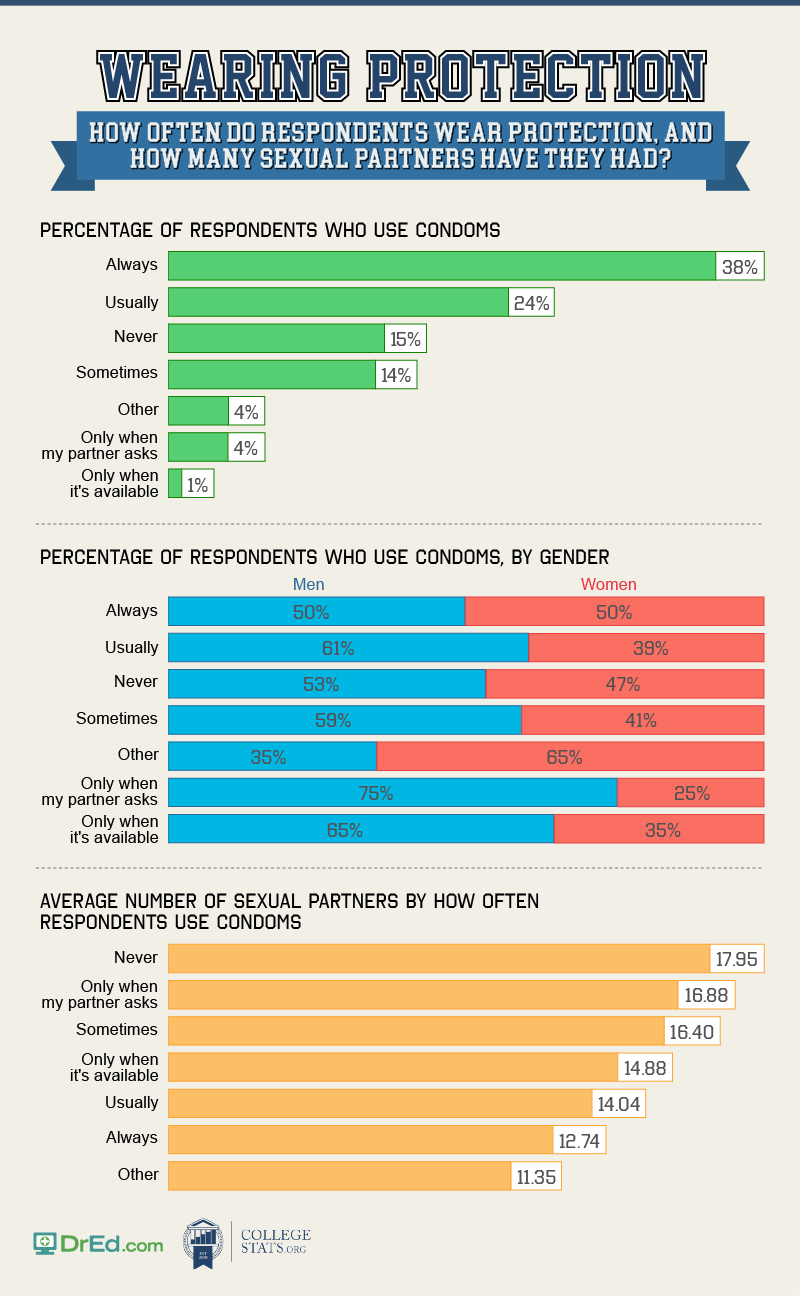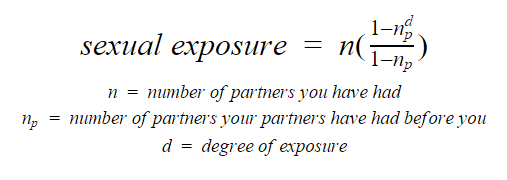College is a time of discovery for students – to expand their intellectual horizons as they pursue postsecondary education. It’s also a time where the quest for knowledge doesn’t just end with their field of study. For many students, there is an extracurricular focus on intimacy in the pursuit of carnal knowledge. The movies don’t lie – though they may potentially exaggerate – when it comes to the amount of sex college students have.
We conducted a survey of 2,000 current and former college students to take a snapshot of activity between the sheets on U.S. campuses. We learned about the frequency of intercourse, the most sexually active campuses, the average number of partners, and the use of protection. Read on to see what sex really looks like on college campuses.
Your Number, Exposed
Want to see just how far your sexual escapades reach? Use this interactive tool originally built by Dr. Ed that we modified to calculate your college sexual exposure. Select your school and enter the number of partners you and your partners have been with. You can even compare that exposure rate to the total population of some major metropolitan areas to help put it into perspective.
Sexual Studies
Temple University in Philadelphia, Pennsylvania may have been founded by a Baptist minister in 1884, but today it’s the most sexually active campus. Temple University, with its population of more than 37,000 students, takes advantage of its urban location in the heart of Philadelphia by doing a different kind of social study between classes.
Rutgers University, in New Jersey, ranked as the second most sexually active group of students. Rutgers students may not watch their Scarlet Knights win very often, but there are plenty of online suggestions about the best places to get intimate on campus if they do decide to skip a game.
Three Florida schools – Florida State University, the University of Central Florida, and the University of Florida – also made the list. Students at these schools may consider themselves fierce rivals, but they should at least be able to agree on the joys of sexual exploration.
Other notable colleges and universities that had a friskier student body included Cornell University, Michigan State University, and the University of Connecticut.
Men and Women, by the Numbers
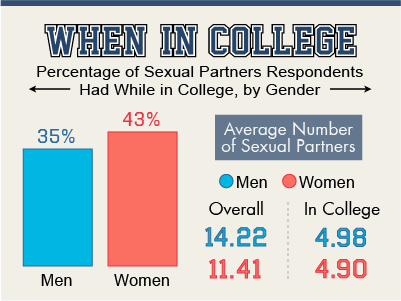
For women, that means close to 43 percent of their total number of sexual partners came from their time at college or university. For men, their time in college only represented 35 percent of their total sexual experiences.
While students exploring sexual relationships may be looking for pleasure or love, their college education may be able to help them in more ways than one. Studies have found that women with a college level education are more likely to be married longer than those without. While roughly 40 percent of women with a high school education or less remain married more than 20 years, nearly 80 percent of college-educated women studied were found to have marriages that lasted longer than 20 years.
Indecent Exposure
After one great night, you may not feel the need to get tested or worry about sexually transmitted diseases. But every time you sleep with one person, it’s likely they’re not the only person in the room.
For every 13 sexual partners you sleep with, those partners would have been exposed to a similar amount of intercourse – so you, plus twelve others (on average). This means that even though you may have only slept with 13 people, you’re indirectly exposed to over 150 sexual partners.
As you remain sexually active, it becomes even more important for you to practice safe sex. Establishing positive sexual behaviors early on can prevent sexually transmitted diseases, such as HIV or chlamydia.
Protective Escapades
There are plenty of extremely smart students on college campuses, studying everything from applied mathematics to biomedical engineering, but using contraceptives during sex is ultimately the smartest decision. However, it seems that some students may be missing this piece of knowledge. Contraceptives like condoms go beyond preventing unwanted pregnancies, as discussed by Planned Parenthood. They also help prevent unwanted sexually transmitted diseases.
Over 15 percent of respondents surveyed shared they never use a condom. Those who reported not using a condom also had close to 18 partners on average versus almost 13 partners for those who always use protection.
It may be that they didn’t receive the appropriate education prior to college. Over $2 billion has been spent on abstinence-only education by the federal government in the last 25 years – programs deemed to be largely ineffective. Officials have called for their removal per the 2017 federal budget proposal.
Sexual Graduation
Sexual exploration on college campuses is happening. On average, students will have sex with close to five partners during their two or four years enrolled in postsecondary education.
Let’s face it, students have a sexual consciousness all their own. For more information on what life is like on campuses across America, head to CollegeStats.org for the best snapshot of the modern-day college experience.
Methodology
We surveyed 2,000 current and former college students to find out about their sexual habits, including how many sexual partners they’ve had in total and how many they had while in college.
We established sexual exposure formulas for a finite geometric series:
“Degree of Exposure” is how many steps of separation exist within your range of indirect partners. A degree of exposure of “1” is the number of partners you have had, while a degree of exposure of “2” is the number of partners you have had plus all your partner’s partners – and so on.


